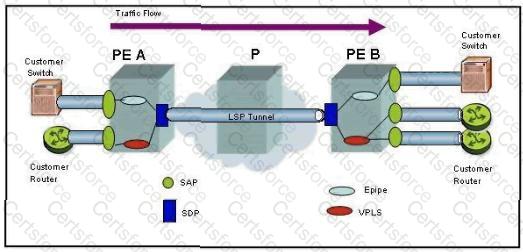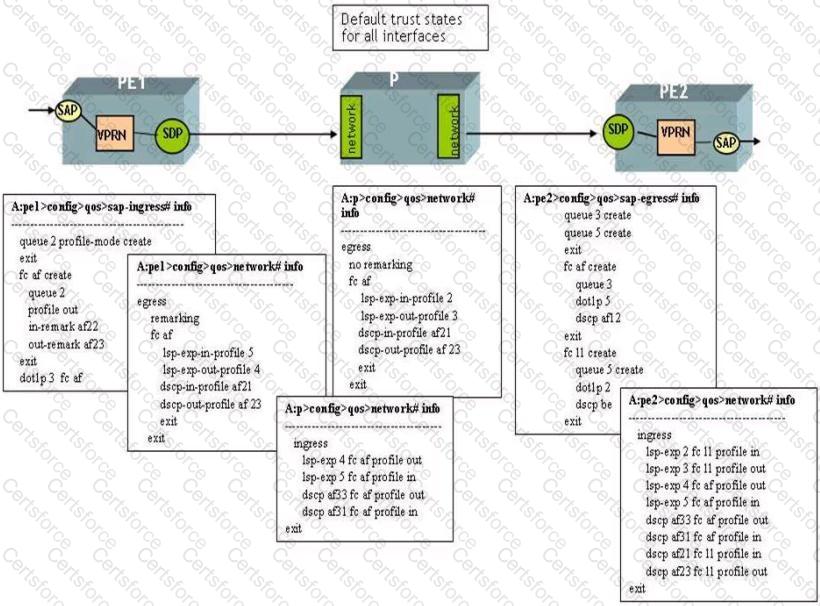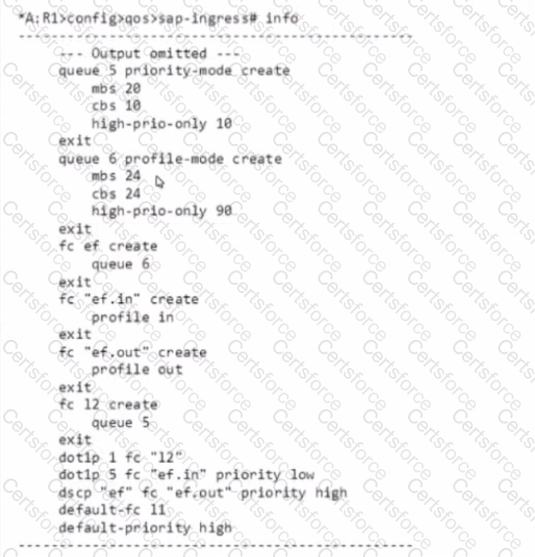Click the exhibit button below. Given this scheduler-policy configuration, which of the following can be said about the scheduler called "high"? (Choose two)

Click the exhibit button below. The service provider has both a VLL (epipe) service and a VPLS, as shown in the diagram below.

At router PE B, traffic arriving from both services will have the same network-queue policy applied.
Which of the following are characteristics of DSCP? (Choose two)
Which of the following statements is considered best practice when changing a network policy that has been associated with an interface?
On the Alcatel-Lucent 7750 SR, where can network-queue policies be applied? (Choose two)
What happens to the MAC entries in the VPLS FDB when "disable-aging" is executed at the VPLS levels
If traffic is destined to queue 5, which has a high-priority-only value of 0 in the network-queue policy, all out-of-profile packets will be dropped.
How many queues are available for use on service egress within a VPLS service?
Which of the following statements are TRUE regarding the building of a QoS-enabled network? (Choose two)
Which of the following can be used as classifiers of customer traffic? (Choose three)
Click the exhibit button below.

All interfaces are using their default trust states and MPLS is used as the transport tunnel. The SAP-ingress, SAP-egress, and network QoS policies have been configured as shown below. Assume that the default network-queue policy is used on each router.
At router PE 1, customer traffic is arriving marked with DSCP BE and tagged with a dot1p value of 3.
Based on the configuration shown below for the VPRN service, what will be the DSCP and dot1p marking for the packet egressing at router PE 2? (Choose two)
According to the SAP-ingress QoS policy shown, which packets have a higher priority to enter queue 6?

Which of the following entities can scheduler policies be applied to? (Choose two)
Without_______, a customer's high priority traffic can be dropped before its low priority traffic.
Policing improves bandwidth utilization by using buffering to absorb high bursts of traffic.